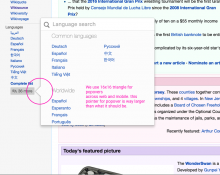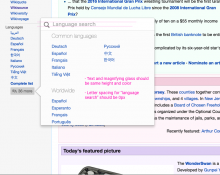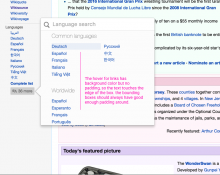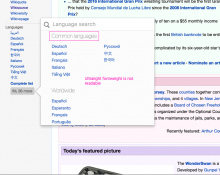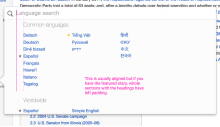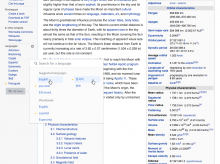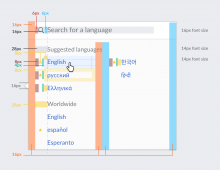This is the list of basic alignment and polish issues with visual design of ULS
This is a Design's blocker for releasing ULS on wikipedia. Releasing something on English Wikipedia will require polished interface based on the number of people who come in contact with this. This will impact perception of how the tool works or how much work has gone behind building it.
It also needs to follow some of the styleguide principles we have.
Here's a list
- Popover triangle pointer
- search box alignments
2.1 Note: also the string for placeholder in the searchbox should be "Search for a language" than "Language search"
- hover for links
- section headers
- width of the popover
Width of popover changes based on the number of language available creating inconsistency in the same workflow a user has on multiple articles.
- left alignment off with featured articles
